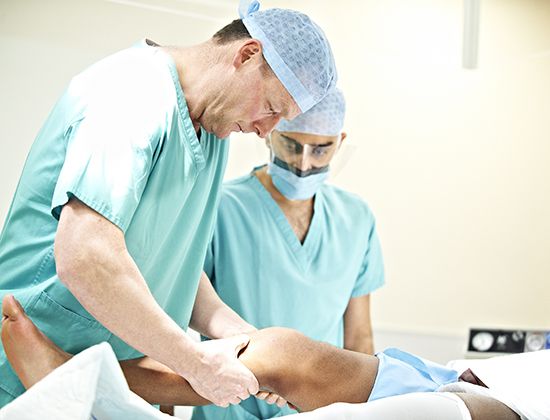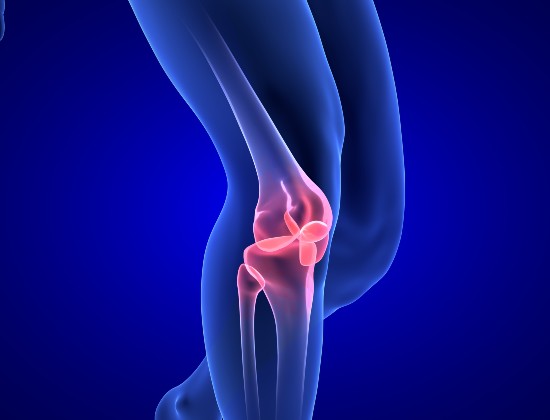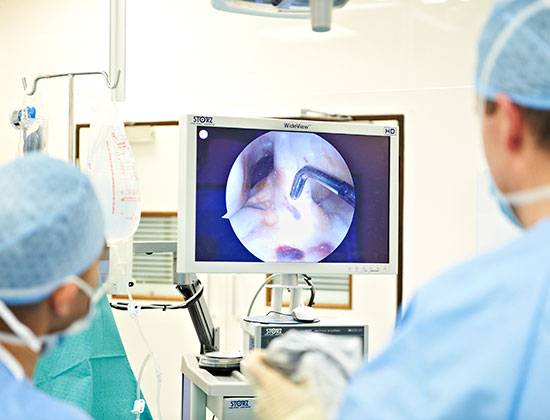Shin bone (Tibial Plateau) fracture
The upper part of the shin bone, or tibial plateau, is a critical weight bearing area of the knee just below the joint. Fractures can also include damage to the cartilage surface of the knee, causing joint surface (chondral) damage.
How is it caused?
A fracture can be caused by a sudden physical injury (trauma) such as twisting which can affect knee alignment, stability and movement. You may have a non-displaced stable fracture, where the bones are cracked but stay in their usual place, an unstable fracture, where bones might become displaced, or a displaced fracture, where the bones are misaligned.
What are the symptoms?
Symptoms include pain and swelling, as well as not being able to put weight on the knee.
How is it diagnosed?
A diagnosis made during a medical examination can be backed up with X-rays to show the extent of the damage.
How is it treated?
Knee surgery will be necessary if the fracture is unstable or displaced:
- Non-displaced, stable fracture: this means that there is a crack in the bone, which can be seen on an X-ray but the bones stay in their usual position. This type of fracture can usually be treated without surgery although you may need to be in a plaster cast or brace and keep weight off the knee for up to three months
- Unstable fracture: sometimes a non-displaced fracture may be at risk of being displaced after an injury. If bones become displaced, you may need to have surgery
- Displaced fracture: this may need surgery to realign the bones so that your knee joint is stable. The type of surgery depends on the fracture and may require pins, plates and wires to hold the bone fragments in place
Important: This information is only a guideline to help you understand your treatment and what to expect. Everyone is different and your rehabilitation may be quicker or slower than other people’s. Please contact us for advice if you’re worried about any aspect of your health or recovery.













.png)

















